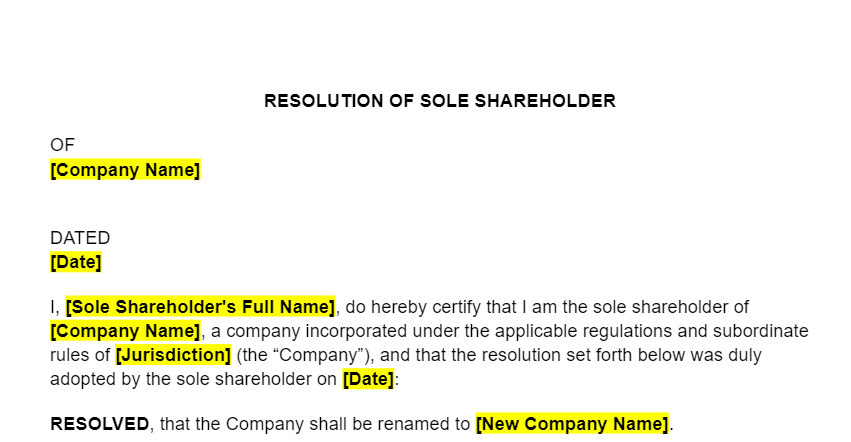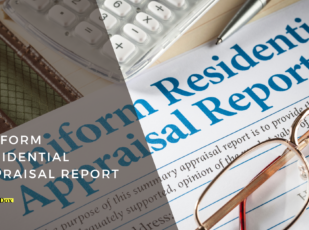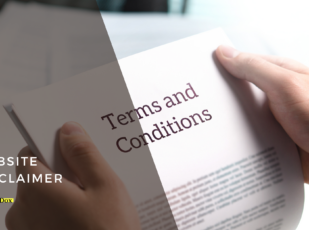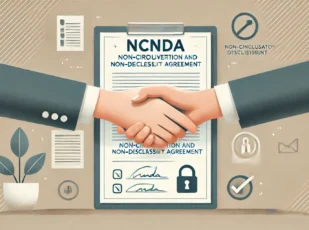
Resolution of Sole Shareholder Template
16 Downloads
Commercial, Corporate
March 4, 2025
Sayantani Dutta
A sole shareholder resolution is proposed and filed for consideration at a corporation’s annual general shareholder meeting by a sole shareholder. This mechanism empowers the shareholder to refer important decisions to the directors of the corporation, backing specific policy changes, governance structures, or financial strategies.
As an integral part of a corporation’s governance, such propositions introduce a systemic mechanism for shaping company policies through voting processes and legal documents. Shareholder resolutions have become increasingly important, most notably in cases concerning environmental, social, and governance (ESG) concerns.
The increasing concern about accountability in companies has encouraged the practice of governance frameworks that engender transparency and accountability. Many corporations have revised their bylaws in an attempt to respond to changing expectations, enhancing shareholder participation in long-term planning for the corporation.
Strategic Considerations for a Shareholder Proposal
Submitting a sole shareholder resolution must work in harmony with the corporation’s governance, through provisions in its articles of incorporation, which mandate the form in which such resolutions must be filed. Understanding the legal environment is important, as requirements depend on jurisdiction, marketplace laws, and corporation bylaws.
A well-structured path involves defining key priorities, and shareholder qualification, and choosing an effective format for submission. In some legal structures, sole shareholder motions require a minimum number of shareholder support to be placed at a general meeting.
The directors of the corporation have a function in acting and approving such resolutions, in accordance with governance processes.
Key Aspects of Shareholder Eligibility and Rights
Investors intending to submit shareholder resolutions must navigate qualification requirements under security laws and corporation governance laws. The corporation’s articles of incorporation and bylaws have provisions for the procedural requirements for resolution filings. Some legal frameworks permit shareholder additions to governance policies but limit them with requirements for a directors’ resolution in certain cases.
Voting outcomes can vary, with part of them being binding corporate resolutions and part acting as mere recommendations. A binding resolution compels the corporation to implement proposed changes, but a non-binding resolution advises but carries no legal force.
Shareholder rights and governance requirements showcase the level at which shareholder resolutions have an impact on company policy.
Drafting a Shareholder Proposal
A well-crafted shareholder resolution is critical to success in attaining the desired objective. The proposal will have to present a strong and convincing argument, supported by relevant statistics and comparisons with industries.
Structuring the report with clearly defined headings enhances readability and complies with governance best practices. Law firms with expertise in corporate governance can give legal advice for compliance with requirements in a specific jurisdiction.
Several best practices can be adopted when preparing a shareholder resolution:
- Ensure the proposal is in compliance with corporate governance best practices and is supported by the corporation’s overall direction.
- Conduct a thorough analysis to underpin the proposal with relevant financial, operational, or ESG-related information.
- Consider the long-term shareholder value and impact on corporate sustainability of the shareholder resolution.
- Ensure that a minimum number of shareholder approvals, determined for submission, is reached in the proposal.
- Adhere to any relevant procedural requirements in the corporation’s bylaws and make the proposal legally effective.
Governance and Voting Considerations
A sole shareholder resolution is first approved by the directors of the corporation and then comes for a vote at a board meeting. The meeting minutes must include consideration and discussion of shareholder proposals in an open manner when arriving at a conclusion.
If the resolution attracts enough support, it is added to a schedule for a meeting and then comes to a vote. Voting structures differ, with a simple majority sometimes being enough to pass a resolution, and sometimes a supermajority is needed.
The quorum requirements in governance policies for a corporation specify the minimum number of shareholders required to validate a voting process. In some cases, shareholder names must be disclosed in filings, most prominently when shareholder resolutions seek amendment in governance documents.
Legal Implications and Compliance
Legal requirements have a significant role to play in shareholder proposals, particularly when it comes to such matters as mergers, amendment of bylaws, and amendment of corporation policies. Companies often seek legal advice for review of proposed settlements for legality and implications. A resolution template can make preparation easier, with uniformity in filings.
The use of a written resolution in lieu of a board meeting in certain cases, for instance, private companies, and in cases when a sole shareholder possesses deciding powers, is permissible. In such a scenario, the undersigned shareholder(s) sign on behalf of the company, approving the resolution in a non-statutory manner, and not holding a proper meeting.
Filing a Shareholder Proposal
Timely submission of a shareholder proposal is a critical procedural step that deserves meticulous consideration of timelines. Companies issue notices for annual general meetings (AGMs) according to jurisdictional requirements and in terms of their governing documents. Reviewing previous proxy statements and direct consultation with the corporation can make requirements for filing and relevant submission timelines more transparent.
Challenges in Proposal Acceptance
Corporations may exclude shareholder proposals for procedural defects, failure to comply with in-house governance policies or compliance with regulatory requirements. Some jurisdictions allow a right of appeal when a company turns down a proposal. Understanding the relevant provisions aids in dealing with rejections effectively.
Collaborative Filing of Shareholder Proposals
Co-filing enables several owners to file a single proposal together, sometimes in an attempt to secure minimum shareholder requirements or gain legitimacy. This collaborative mechanism can alleviate liquidity restrictions in cases when share-blocking provisions are in force. Strategic coordination strengthens the proposal with its expression of widespread investors’ support and its increased legitimacy.
Key considerations for co-filing are the following.
- Secure funding early and make financial obligations between co-filing members, such as legal and administration expenses, explicit.
- Understand applicable anti-trust and concertation laws in respective jurisdictions.
- Exceed minimum shareholding requirements to accommodate potential market fluctuations and ownership verification challenges.
- Engage experienced co-filers with a record of effective proposal submissions and investor mobilization.
- Develop a logical resolution for board submission in consonance with the investment group’s strategic aims.
- Ensure all required documentation is completed well before submission deadlines.
Engaging in Negotiations After Filing
Corporations may try to bargain with advocates in return for withdrawal of the proposal. This can occur in policy commitments, renewed corporate actions, or new management-sponsored motions addressing similar issues.
The decision to bargain or withdraw will rely on the aspirations and objectives of the shareholder. Proponents who withdraw resolutions grounded in corporate pledges must implement tracking processes for following through with them. Public disclosure of such pledges encourages accountability and deters companies from retraction of pledges with impunity.
Building Support for a Shareholder Proposal
Gaining backing for a proposal through a widespread base of investors will make a proposal successful. Various strategies can be adopted to raise awareness and garner endorsements in a manner that is in compliance with shareholder advocacy and proxy solicitation laws in the marketplace.
Here are a few valid approaches to building proposal support.
- Distribute supplementary documents outlining the background and justification for investment in the proposal.
- Leverage investor collaboration platforms to expand outreach and drive resolution.
- Engage proxy advisor firms to inform your vote and accurately represent your proposal.
- Establish direct communication with significant shareholders and prioritize outreach to key institutional investors.
- Where applicable, highlight beneficiary perspectives to reinforce the proposal’s alignment with stakeholder interests.
- Develop a multi-channel communications campaign with a strong social presence.
- Coordinate efforts with similar resolution advocates at other companies to have the greatest impact.
Participation in Annual General Meetings
AGMs serve as a direct platform for discussion with both the board of directors and the executive management. Proponents can use this platform to present resolutions, raise discussions regarding significant concerns, and promote shareholder concerns.
The meeting schedule and working processes ordinarily involve direction about participatory logistics.
Proponents may make contact with the corporation beforehand in order to confirm procedural information regarding attendance and submission of questions.
Certain jurisdictions require proponents or authorized representatives to attend the AGM to validate proposal submissions. In some cases, advocates will make a brief statement in affirmation of the resolution. Ensuring compliance with such requirements for a procedure strengthens the legitimacy of the proposal.
Post-Vote Actions and Next Steps
Following the annual general meeting, companies disclose voting results, providing insight into shareholder and investor sentiment and shareholder resolution support.
Proponents should have a post-vote follow-up plan to track actions taken for successful propositions and layout follow-up actions for failed propositions. A proactive post-election follow-up entails monitoring companies’ performance in terms of fulfillment of implementation commitments and continued dialogue with key stakeholders.
Effective communication through channels maintains momentum and reinforces accountability. If necessary, shareholders can request consideration for re-filing, with re-filing restrictions applicable under relevant laws.
The Importance of Having a Template for Shareholder Resolutions
A well-structured template makes shareholder resolution preparation easier through a uniform format that conforms to legal and procedural requirements. Utilizing a resolution format encourages transparency, uniformity, and compliance with governance frameworks, and reduces the opportunity for procedural errors that will result in rejections.
A structured report facilitates easier review for board members and legal departments, and it is therefore likelier that resolution will be considered and adopted. A template allows for the effective incorporation of key factors, such as proposal objectives, applicable laws, and justification, in a format that aids in presenting a strong case in a resolution.
It provides concise headings and sections for easier reading and keeps to high standards of professional presentation. By following a uniform format, advocates can devote full attention to the substantive issue of their resolution without having to worry about format discrepancies.
For investors submitting resolutions across multiple companies or jurisdictions, templates help maintain uniformity and adaptability. Law firms and compliance professionals often prescribe standard forms for ease of legal review and compliance-related risk avoidance.
A properly crafted resolution maximizes the chance for a successful filing, maximizes shareholder and stakeholder awareness and participation, and enables a strategic direction for programs of corporate governance.
Download a Free Resolution of Sole Shareholder Template from FreshDox
Try our platform free for 7 days with our exclusive trial. You get full access to our entire library of professional templates for business, including our sole shareholder resolution template, designed by industry professionals. Your free trial starts now, just sign up for a Basic or Premium account and start exploring our template library right now.
Popular searches:
- Resolution of Sole Shareholder Template pdf
- Resolution of Sole Shareholder Template sample
- Resolution of Sole Shareholder Template download
- Resolution of Sole Shareholder Template format
- Resolution of Sole Shareholder Template template
- Resolution of Sole Shareholder Template word
- Resolution of Sole Shareholder Template free
Related Templates
Discover more templates that align with your needs and preferences.

Ready to Sign Up?
Sign up for FreshDox.com’s 7-day trial and discover why so many individuals and businesses trust us for their legal document template needs.
- Cancel any time
- 7-day free trial
- From 300+ Customer Reviews
















